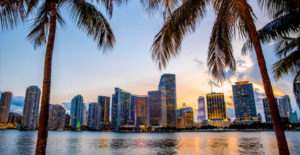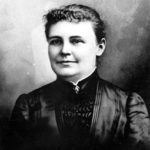FROM THE OTHER SIDE OF CUBA: MIAMI, “HAPPY 121th BIRTHDAY”!”
The Miami area was better known as “Biscayne Bay Country” in the early years of its growth. The few published accounts from that period describe the area as a wilderness that held much promise. The area was also characterized as “one of the finest building sites in Florida”.
The city’s name is derived from the Miami River, which is ultimately derived from the Mayaimi people who lived in the area at the time of European colonization
After the Great Freeze of 1894, the crops of the Miami area were the only ones in Florida that survived. Julia Tuttle, a local landowner, convinced Henry Flagler, a railroad tycoon, to expand his Florida East Coast Railway to Miami. On July 28, 1896, Miami was officially incorporated as a city with a population of just over 300.
Miami prospered during the 1920s, but weakened when the real-estate bubble burst in 1925, which was shortly followed by the 1926 Miami Hurricane and the Great Depression in the 1930s. When World War II began, Miami played an important role in the battle against German submarines due to its location on the southern coast of Florida. The war helped to increase Miami’s population to almost half a million.
After Fidel Castro rose to power in 1959, many Cubans emigrated to Miami, further increasing the population and developing the area.
After 121 years of incorporated officially as a City Miami remains a major international, financial, and cultural center.
DESDE EL OTRO LADO DE CUBA: MIAMI, “FELICIDADES EN TU 121th CUMPLEAÑOS”! “
El área de Miami fue mejor conocido como “Biscayne Bay Country” en los primeros años de su crecimiento. Las pocas cuentas publicadas de ese período describen el área como un yermo que llevó a cabo mucha promesa. La zona también se caracterizó como “uno de los mejores sitios de construcción en la Florida”.
El nombre de la ciudad se deriva del río de Miami, que es derivado en última instancia de la gente de Mayaimi que vivió en el área en el momento de la colonización europea.
Después de la Gran Congelación de 1894, las cosechas del área de Miami fueron las únicas en Florida que sobrevivieron. Julia Tuttle, un terrateniente local, convenció a Henry Flagler, un magnate del ferrocarril, para expandir su Ferrocarril de Costa Este de la Florida a Miami. El 28 de julio de 1896, Miami fue incorporada oficialmente como una ciudad con una población de poco más de 300.
Miami prosperó durante la década de 1920, pero se debilitó cuando la burbuja inmobiliaria estalló en 1925, que fue seguido poco después por el huracán de Miami en 1926 y la Gran Depresión en los años treinta. Cuando comenzó la Segunda Guerra Mundial, Miami jugó un papel importante en la batalla contra submarinos alemanes debido a su ubicación en la costa sur de la Florida. La guerra ayudó a aumentar la población de Miami a casi medio millón.
Después de que Fidel Castro subió al poder en 1959, muchos cubanos emigraron a Miami, aumentando aún más la población y desarrollando el área.
Después de 121 años de incorporarse oficialmente como una ciudad Miami sigue siendo un importante centro internacional, financiero y cultural.
Agencies/Wiki/Internet Photos/Arnoldo Varona/TheCubanHistory.com
THE CUBAN HISTORY, HOLLYWOOD.









